TRANSNATIONAL COOPERATION FOR SUSTAINABLE RIVER BASIN MANAGEMENT CONFERENCE WAS HELD
Over 80 participants from 8 Danube countries took part in the event, which showcased the goals, activities and outputs of these projects. The event’s morning session focused on JOINTISZA project stakeholder involvement, offering thorough insight into the project’s planned activities and outcomes. The project team is committed to reaching as many stakeholders as possible through its activities and communication efforts. An engaging discussion followed concerning the involvement of on-the-job stakeholders, with the participants sharing a wide range of views, ideas and experiences.
Up next was a discussion on the importance of upgrading the Integrated Tisza River Basin Management Plan. Compared to its predecessor, the second version represents a huge step forward with the integration of additional sectors. The plan also includes more detailed provisions related to flood-, drought- and urban planning. Regarding efficient water management, the importance of preserving ecological status was underlined. The possibilities and effects of river navigation possibilities also have to be considered to the extent that time and budget will allow. Based on prior experiences, it was suggested that there is the need to build trust through information dissemination and consultation with other stakeholder sectors, and to get them more involved in sharing experience and data.
During the part of the event dedicated to the formal inauguration of the JOINTISZA and DanubeSediment projects, János Józsa, Rector of the Budapest University of Technology and Economics, mentioned that tailoring the RBMP and Flood Risk Directive is something like “taking seriously what has been considered a merely ‘fashionable’ subject.” István Joó from the Hungarian Ministry of Foreign Affairs and Trade added that the role of Central and Eastern European countries is expanding in terms of transnational programme sub-basin activities, and that the greater involvement of non-EU countries provides evidence of clear vision on behalf of the Hungarian Presidency of the Danube Region Strategy. Ivan Zavadsky, Executive Secretary of the International Commission for the Protection of the Danube River (ICPDR), noted that the ICPDR provides all Danube countries with a framework for transboundary cooperation, including at sub-basin level. Adding that the outcomes of these projects will provide valuable input to the Danube River Basin Management Plan, Zavadsky wished the project teams success, perseverance and innovative thinking in their future implementation efforts.
The DanubeSediment Project Launch Event in the afternoon brought together project partners and key stakeholders from across the Danube Region for the first time. To introduce the project, steps towards building up knowledge about the sediment regime in the Danube were presented. A second block focused on building up governance and discussed guiding principles on sediment management. During two open discussions, the event offered opportunity for stakeholders and decision makers to learn about the main goals and outputs of the project. For example, the audience and project partners discussed which tributaries to include in the Danube sediment monitoring and how experience from pilot areas can be transferred to other areas. Associate strategic partners discussed their views on the expectancies for sediment management in the field of hydropower generation, nature protection and fairway maintenance. Project partners and key stakeholders emphasized that in order to produce adequate solutions for sustainable sediment mangement, stakeholders will be closely involved throughout the project.
The JOINTISZA session and the Inauguration session presentations can also be downloaded together with the gallery of the event.


